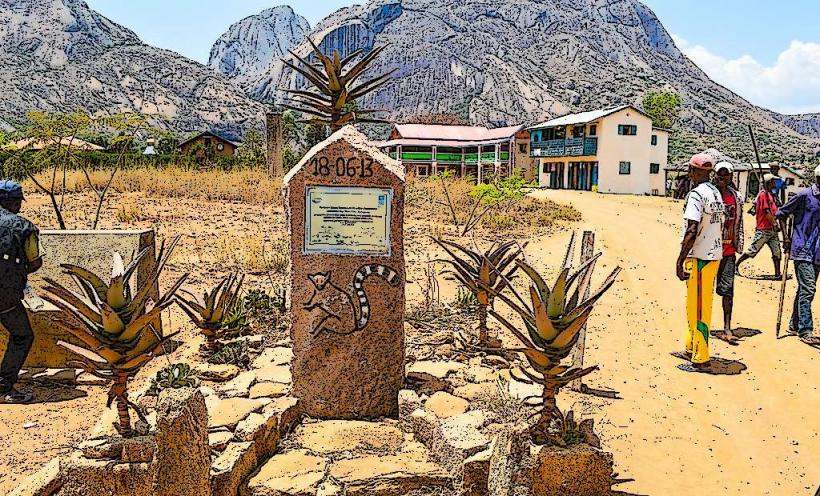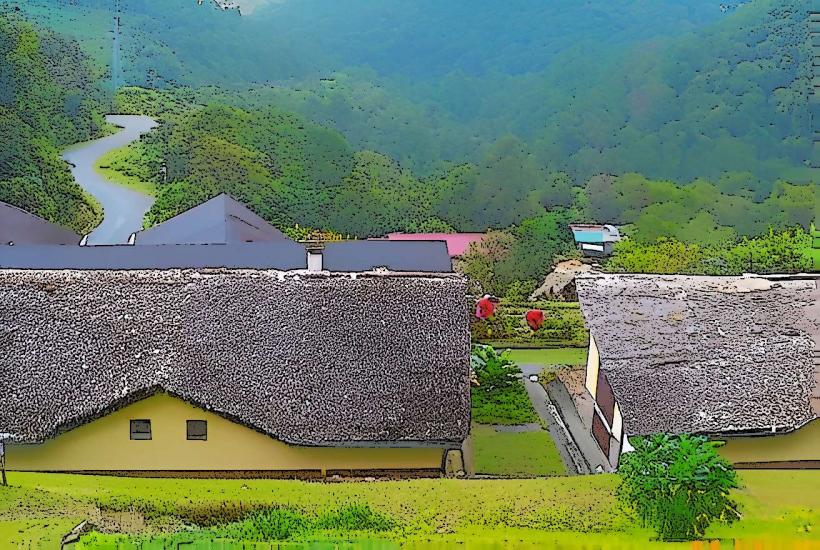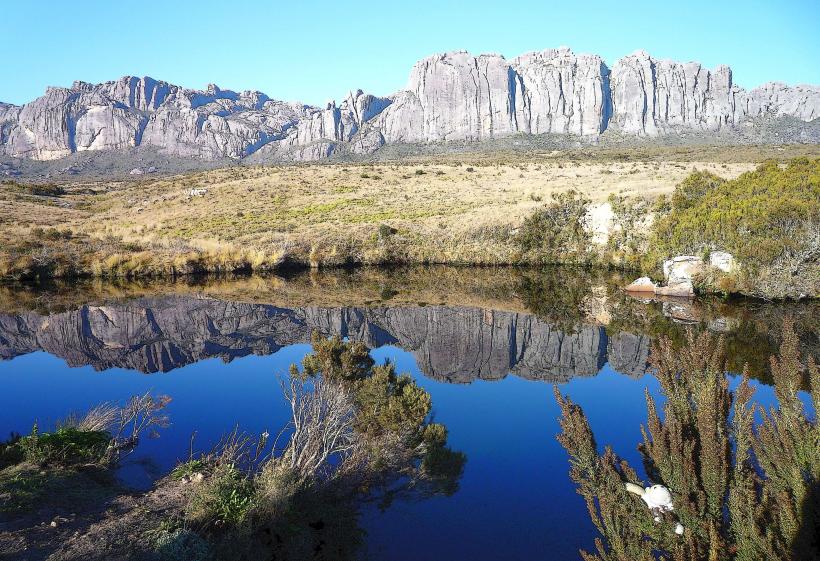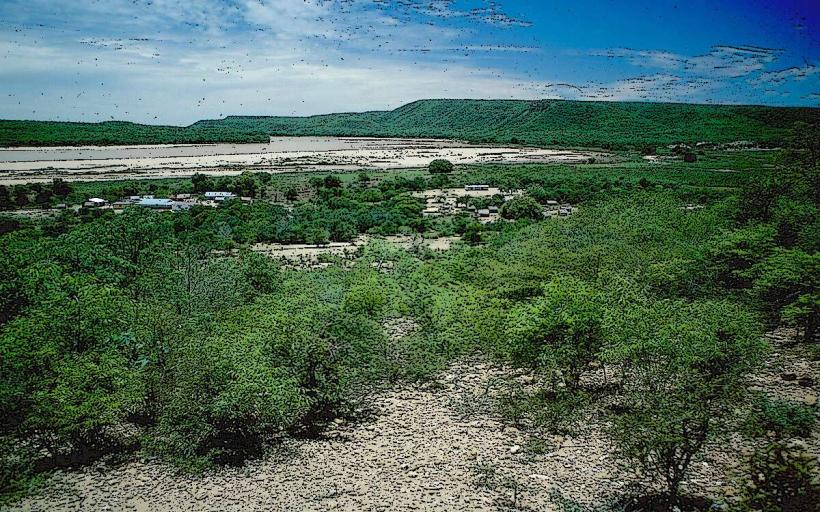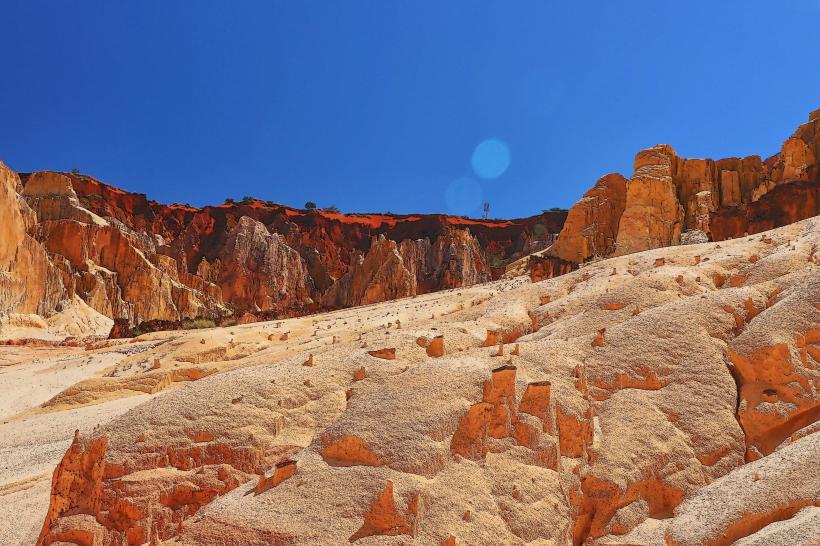Information
Landmark: Village of AmbalavaoCity: Ambalavao
Country: Madagascar
Continent: Africa
Ambalavao is a picturesque town located in the Haute Matsiatra region of central Madagascar. It serves as both a gateway to the Anja Community Reserve and an important cultural and economic hub in the southern part of the island. The town’s location, nestled in the foothills of the Andringitra Mountains, gives it a unique natural beauty, and it plays a significant role in both the local economy and in the preservation of Malagasy culture and traditions.
Overview
Location: Ambalavao is situated approximately 65 kilometers northeast of Toliara (Tuléar) and about 400 kilometers south of Antananarivo, the capital of Madagascar. It is positioned along the Fiherenana River, making it an essential center for agricultural activities in the region.
Population: The town has a population of around 50,000 to 60,000 people, with a mix of local ethnic groups, including the Antandroy and Antanosy peoples. These communities maintain a deep connection to their agricultural traditions, including rice farming and livestock raising.
Key Features and Attractions
Cultural Significance: Ambalavao is well known for its rich cultural heritage, which includes traditional music, dances, and craftsmanship. It is also famous for its Antaimoro paper, a traditional Malagasy craft that involves creating handmade paper from the bark of the Avoha tree. This paper has historical significance, as it was used to create sacred manuscripts and other important documents. Visitors to Ambalavao can learn about the paper-making process and purchase handcrafted goods made from Antaimoro paper as souvenirs.
Anja Community Reserve: Located just a short distance from Ambalavao, the Anja Community Reserve is one of the town's top attractions. The reserve is a community-run protected area famous for its population of ring-tailed lemurs and its scenic landscapes, which include granite rock formations and lush forests. It is a fantastic destination for hiking, wildlife viewing, and learning about local conservation efforts.
Historic Sites and Architecture: Ambalavao features a variety of traditional Malagasy architecture, with many homes built in the local style, using natural materials like stone, wood, and thatch. The town’s marketplace and surrounding areas are vibrant, offering a glimpse into the daily lives of the Malagasy people.
Zebu and Livestock Trade: Ambalavao is a major center for the trade of zebu (a type of cattle) in Madagascar. Zebu are crucial to the local economy, serving as a source of meat, milk, and labor. The town hosts an active zebu market, where traders from across the region come to buy and sell livestock.
Agriculture: The fertile plains around Ambalavao are perfect for growing rice, cassava, maize, and various fruits. The Fiherenana River plays a crucial role in providing irrigation to local farms. Visitors may see rice terraces and other forms of traditional farming as they explore the surrounding countryside.
Traditional Malagasy Customs: Ambalavao is home to vibrant cultural practices, especially when it comes to Malagasy feasts, weddings, and sacred ceremonies. The town and its surroundings are known for hosting events where local communities come together to celebrate their heritage with music, dances, and elaborate feasts.
Economic Activities
Agriculture: Agriculture is the backbone of Ambalavao’s economy, with the fertile land around the town providing excellent conditions for crops such as rice, cassava, maize, and vegetables. The river also provides irrigation for the surrounding farmlands.
Crafts: In addition to the famous Antaimoro paper, Ambalavao is also known for its handwoven products, including baskets, hats, and textiles. The town's artisans produce high-quality, traditional handicrafts, which are sold in local markets and to tourists.
Livestock Trade: Ambalavao is an important center for the trade of zebu, which plays a key role in the economic life of the region. The town holds a bustling zebu market, where livestock is traded for meat, dairy, and as a form of wealth.
Tourism and Visitors
Ambalavao is increasingly becoming a popular destination for tourists, especially those interested in nature, wildlife, and culture. The town offers visitors the opportunity to experience rural Malagasy life, as well as the stunning natural beauty of the Andringitra Mountains and Anja Community Reserve.
Trekking: The surrounding area is ideal for trekking, with routes leading to the Anja Reserve, as well as longer treks into the Andringitra Mountains. The mountains provide panoramic views, rocky landscapes, and rich biodiversity.
Cultural Tours: Visitors can explore the town's vibrant market, visit local artisans, and observe traditional agricultural practices. Local guides offer tours of the region's historical and cultural landmarks, making it an enriching experience for those interested in Malagasy heritage.
Wildlife Watching: The nearby Anja Community Reserve offers one of the best opportunities to see ring-tailed lemurs and other endemic species in their natural habitat. Birdwatching, hiking, and nature walks are popular activities in the reserve.
Conclusion
Ambalavao is a charming and culturally rich town that serves as an entry point to some of Madagascar's most stunning natural and cultural wonders. It offers visitors the chance to experience traditional Malagasy life, explore the Anja Community Reserve, and learn about unique craftsmanship like Antaimoro paper. Whether you're drawn to the local markets, the fascinating landscapes, or the wildlife, Ambalavao provides a truly authentic experience of Madagascar's southern region.

